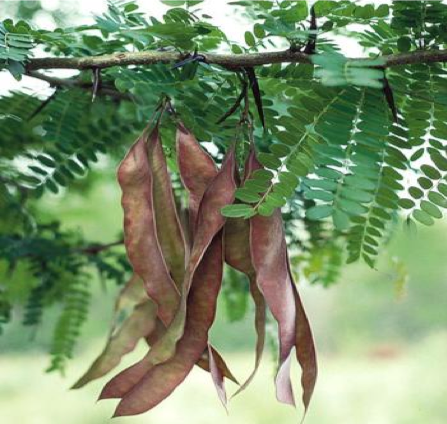
Honey Locust
Gleditsia triacanthos
Family: Fabaceae
Leaf Type: Deciduous
Mature Height: 20-30 m (~65-100 ft)
Fall Color: Yellow
Native Range: Honey locusts are commonly found throughout the Midwest and Southeast. They are aggressive invasive plants outside of their native range.

Features
Honey locusts are members of the legume, or bean, family. These include all plants that have seeds in a bean pod including peanuts, peas, and redbuds. The leaves of the honey locust are compound which means that the full leaf is made up of smaller leaflets. The leaves may be up to six inches long with 15-30 leaflets that are about an inch each. The fruit of these trees is a pea-like fruit pod that is dark red-brown and about eight inches long. Inside the fruit is a sweet pulp that may have given the tree its name. This pulp was a food source for Native Americans. We recommend not sampling the fruits & nuts of the trees and plants here at Adventure Science Center. The bark of honey locusts is dark gray-brown. On younger trees, there may be pale horizontal stripes on smooth bark. Mature trees tend to have trunks with broad ridges that peel from the sides. Honey locusts have thorns on their trunks and branches. These can be three or more inches long and are usually clustered on the trunk. The thorns harden as they mature and are very sharp.

Fun Facts
● The honey locust derives the name "honey" from the sweet, honey-like substance found in its pods.
● Sometimes a nuisance to famers, the thorns of honey locusts have been known to pop tractor tires.
● The pulp inside the fruit pod is edible. We don’t recommend trying to eat one here!
Did you know that trees provide homes for animals, keep us cool and clean our air? Click here to learn more about the benefits that trees provide to us and our world.

